Dear expectant mothers, pregnancy is a time of excitement and anticipation, yet it also requires careful attention to detail. Among the myriad of prenatal considerations, folic acid supplementation stands out as a critical topic. Traditionally, folic acid has been hailed for its role in preventing neural tube defects in developing fetuses. However, recent research has shed light on a surprising phenomenon: the relationship between folic acid intake and the risk of congenital heart disease (CHD) in offspring is not linear but rather U-shaped. This means that both insufficient and excessive levels of folic acid can increase the risk of CHD. Let's explore this relationship and discuss a safer approach to folic acid supplementation.
The U-Shaped Relationship: Research Insights
A study published in JAMA Network Open analyzed 129 cases of CHD and 516 control cases, revealing a significant U-shaped relationship between maternal serum folate levels during pregnancy and the risk of CHD in offspring.
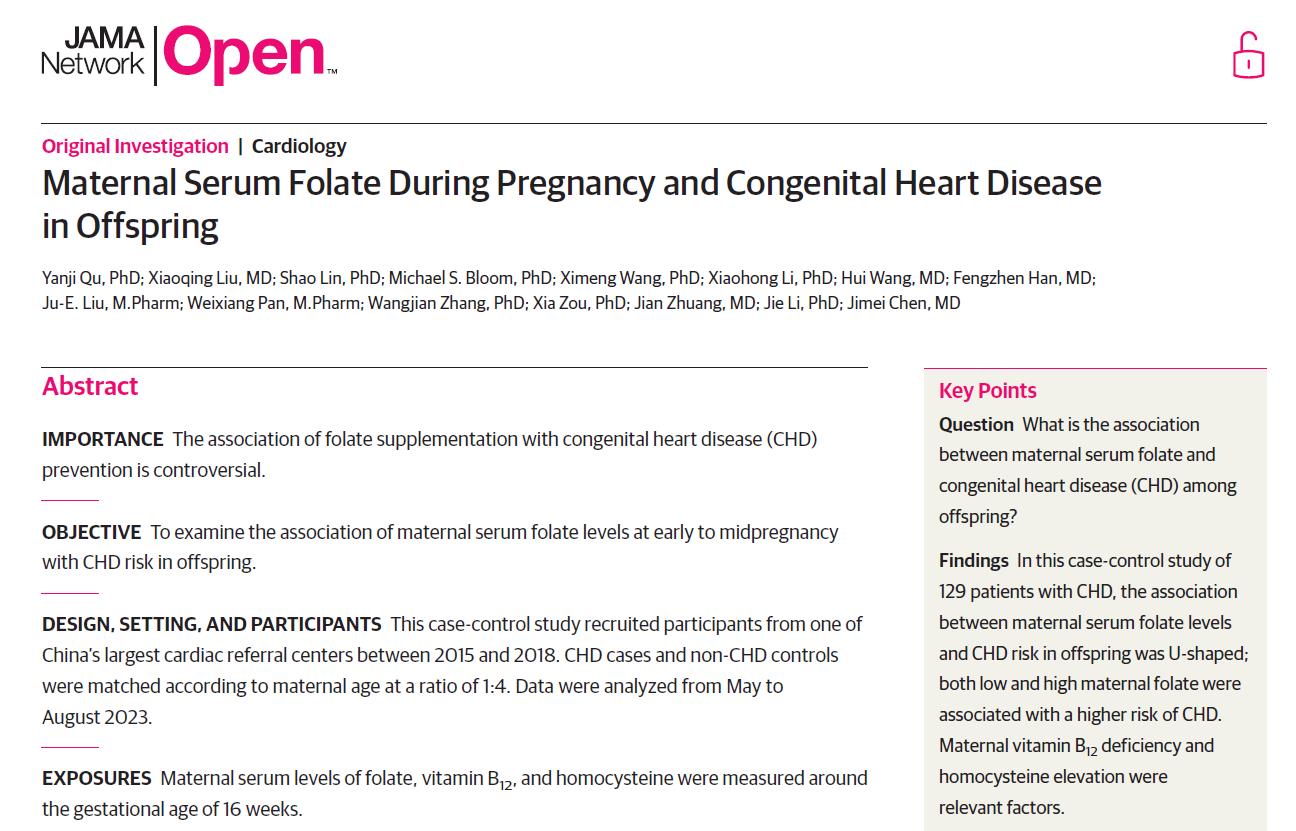
The findings indicate that, compared to moderate levels of folic acid, both the lowest and highest levels were associated with an increased risk of CHD. This suggests that there is an optimal range for folic acid intake, and deviations from this range, either too low or too high, can have adverse effects on the developing heart of the fetus.
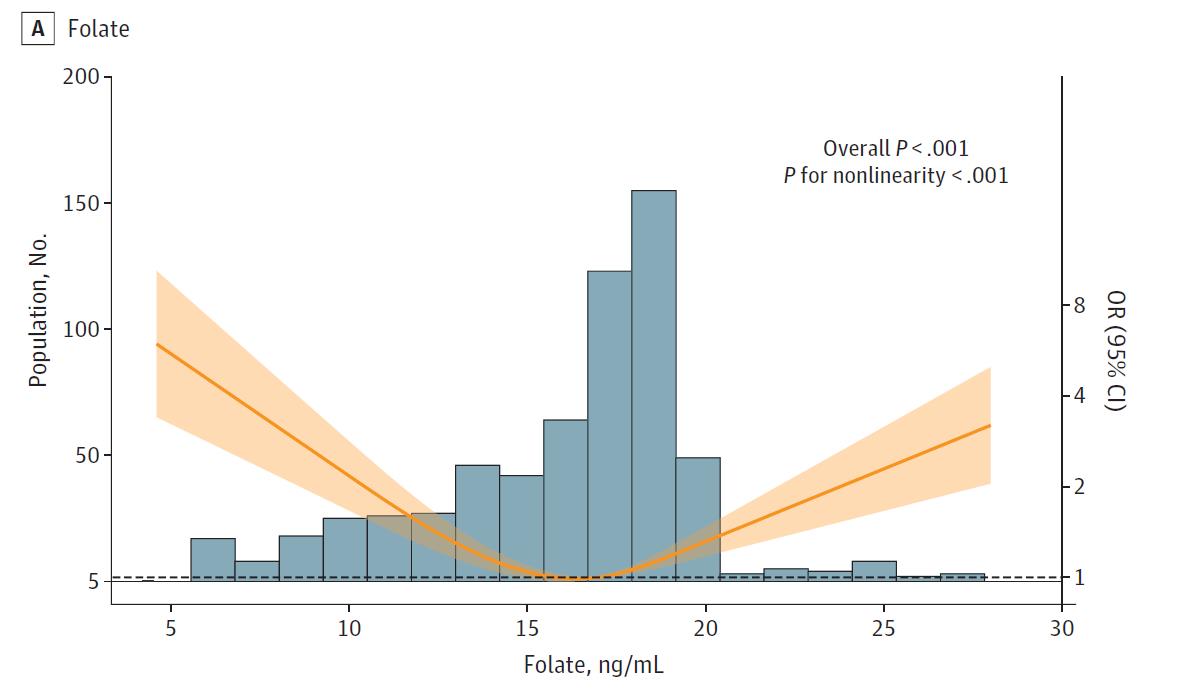
The Role of Unmetabolized Folic Acid
To understand this U-shaped relationship, it's important to consider the impact of unmetabolized folic acid. Synthetic folic acid, which is commonly used in prenatal supplements, requires a series of enzymatic conversions to be absorbed by the body. When intake exceeds 200μg per day, unmetabolized folic acid can accumulate, potentially disrupting normal physiological processes and affecting fetal heart development.
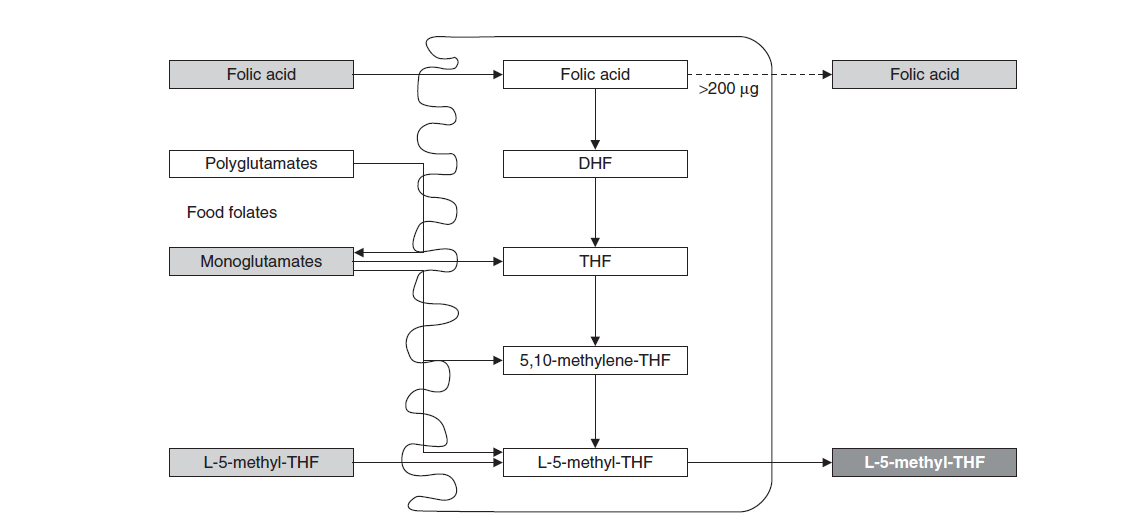
Further insights come from a study published in Cells, which used zebrafish models to investigate the cardiovascular toxicity of synthetic folic acid (FA). The study found that FA exhibited significant cardiovascular toxicity, inhibiting angiogenesis and leading to abnormal cardiovascular development, and even causing embryonic death.

The root of this toxicity was traced to the downregulation of a gene named eif1axb by FA.
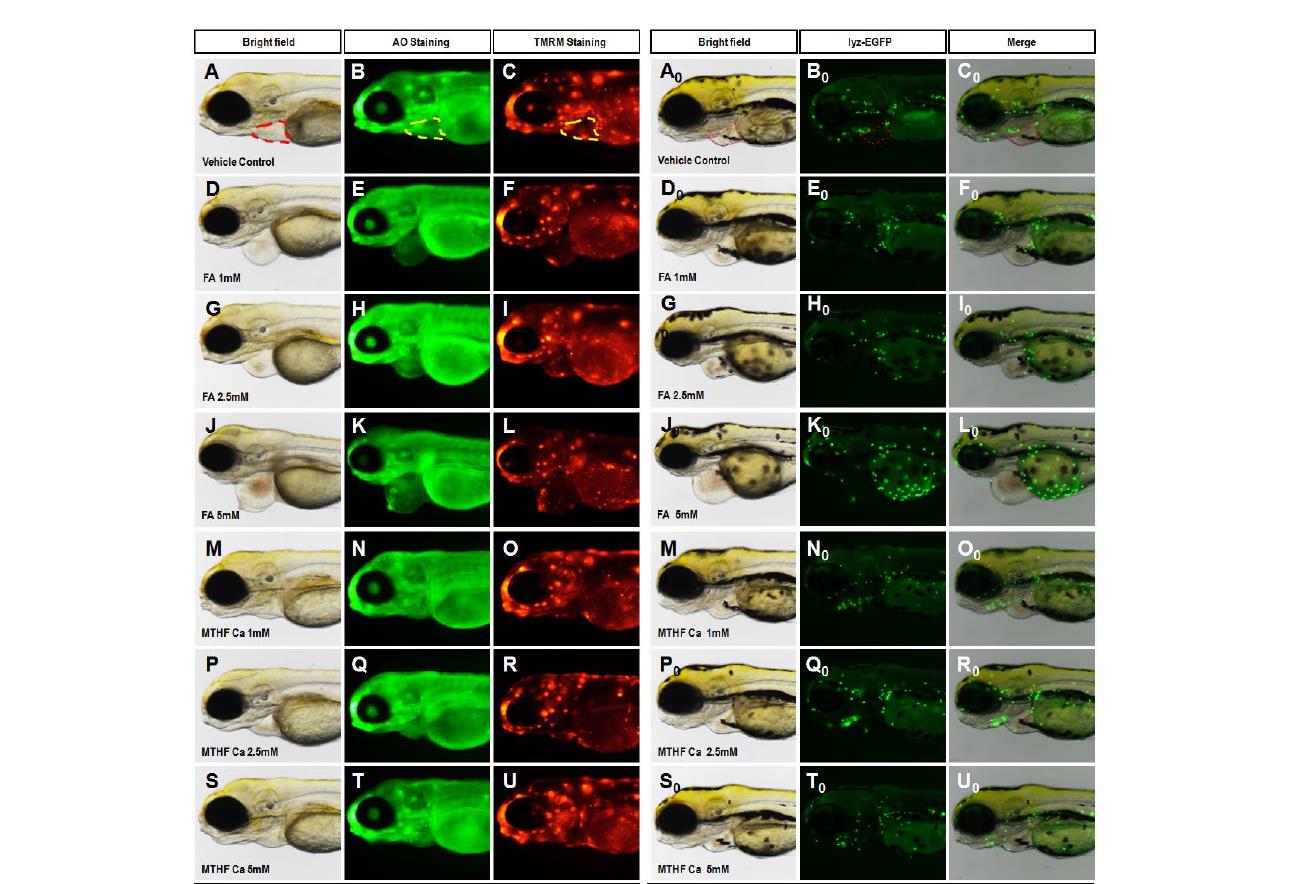
In contrast, 6S-5-methyltetrahydrofolate calcium (MTHF-Ca) did not exhibit such cardiovascular toxicity, suggesting that unmetabolized folic acid may be a key factor in increasing the risk of CHD.
The Risks of Unmetabolized Folic Acid
The accumulation of unmetabolized folic acid poses potential risks to the cardiovascular system. In zebrafish models, embryos treated with FA showed symptoms such as pericardial edema, bradycardia, and abnormal vascular development. These findings clearly indicate that unmetabolized folic acid can interfere with the cardiovascular development of embryos, thereby increasing the risk of CHD.
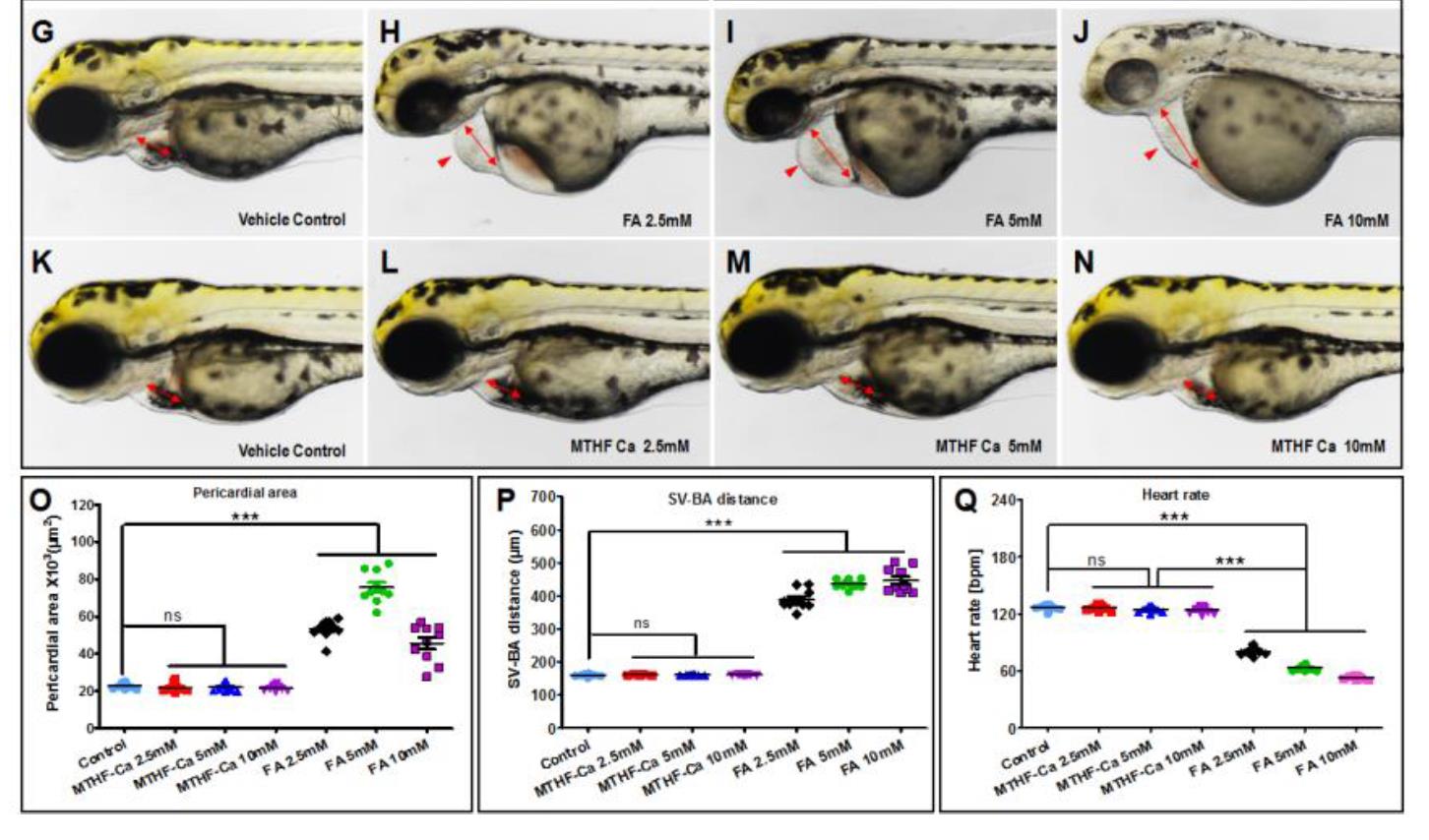
A Safer Alternative: 6S-5-Methyltetrahydrofolate (5-MTHF)
Fortunately, there is a safer and more effective form of folic acid supplementation available: 6S-5-methyltetrahydrofolate (5-MTHF). As the final metabolite of synthetic folic acid in the body, 5-MTHF can be directly absorbed without the need for complex conversion processes. It constitutes over 98% of the human body's folate form and plays a crucial role in the metabolism of homocysteine, helping to reduce its levels and prevent cardiovascular diseases.

Naturalization folate (Magnafolate) is particularly noteworthy. Its production process avoids harmful substances such as formaldehyde and p-toluenesulfonic acid, and it strictly controls the content of harmful impurities, achieving an essentially non-toxic status. Magnafolate can rapidly increase serum and red blood cell folate levels, making it an ideal source of active folate for maternal and infant health.
Conclusion
Folic acid supplementation during pregnancy should be guided by scientific evidence. Both low and high levels of folic acid can pose risks to the heart health of the developing fetus. Unmetabolized folic acid appears to be a critical factor in this risk. 6S-5-methyltetrahydrofolate (5-MTHF), with its high bioavailability and lack of unmetabolized folic acid, is a safer and more reliable choice for expectant mothers. It is suitable for 78.4% of individuals with folic acid metabolic disorders. When choosing a folic acid supplement, consider 5-MTHF, especially in the form of Naturalization folate (Magnafolate), to support the healthy development of your baby.

We wish every expectant mother a healthy and joyful pregnancy, and the safe arrival of new life.
Reference:
1. Qu, Y., Liu, X., Lin, S., Bloom, M. S., Wang, X., Li, X., Wang, H., Han, F., Liu, J.-E., Pan, W., Zhang, W., Zou, X., Zhuang, J., Li, J., Chen, J. (2024). Maternal Serum Folate During Pregnancy and Congenital Heart Disease in Offspring. JAMA Network Open. 7(10):e2438747.
2. Lian Z, Wu Z, Gu R, Wang Y, Wu C, Cheng Z, He M, Wang Y, Cheng Y, Gu HF. Evaluation of Cardiovascular Toxicity of Folic Acid and 6S-5-Methyltetrahydrofolate-Calcium in Early Embryonic Development. Cells. 2022;11:3946.
3. Wang Shuowen, Zhang Qizong, Zhang Ting, Wang Li. Research Progress of 5-Methyltetrahydrofolate in Preventing Folic Acid Deficiency. International Journal of Pediatrics, 2020, 47(10): 723-726.
4. Pietrzik K, Bailey L, Shane B. Folic Acid and L-5-Methyltetrahydrofolate: Comparison of Clinical Pharmacokinetics and Pharmacodynamics. Clinical Pharmacokinetics. 2010;49(8):535-548.
5. Lian Zenglin, Liu Kang, Gu Jinhua, Cheng Yongzhi, et al. Biological Characteristics and Applications of Folic Acid and 5-Methyltetrahydrofolate. China Food Additives, 2022, Issue 2.
#L-Methylfolate#5-MTHF#folate#
L-5-methyltetrahydrofolate calcium#SSW#Magnafolate#151533-22-1#active folate#妊高#HCY#同型半胱氨酸#妊娠期高血压#PIH#先兆子痫#妊娠期糖尿病#先天性心脏病#CHD#

 Español
Español Português
Português  русский
русский  Français
Français  日本語
日本語  Deutsch
Deutsch  tiếng Việt
tiếng Việt  Italiano
Italiano  Nederlands
Nederlands  ภาษาไทย
ภาษาไทย  Polski
Polski  한국어
한국어  Svenska
Svenska  magyar
magyar  Malay
Malay  বাংলা ভাষার
বাংলা ভাষার  Dansk
Dansk  Suomi
Suomi  हिन्दी
हिन्दी  Pilipino
Pilipino  Türkçe
Türkçe  Gaeilge
Gaeilge  العربية
العربية  Indonesia
Indonesia  Norsk
Norsk  تمل
تمل  český
český  ελληνικά
ελληνικά  український
український  Javanese
Javanese  فارسی
فارسی  தமிழ்
தமிழ்  తెలుగు
తెలుగు  नेपाली
नेपाली  Burmese
Burmese  български
български  ລາວ
ລາວ  Latine
Latine  Қазақша
Қазақша  Euskal
Euskal  Azərbaycan
Azərbaycan  Slovenský jazyk
Slovenský jazyk  Македонски
Македонски  Lietuvos
Lietuvos  Eesti Keel
Eesti Keel  Română
Română  Slovenski
Slovenski  मराठी
मराठी  Srpski језик
Srpski језик 








 Online Service
Online Service